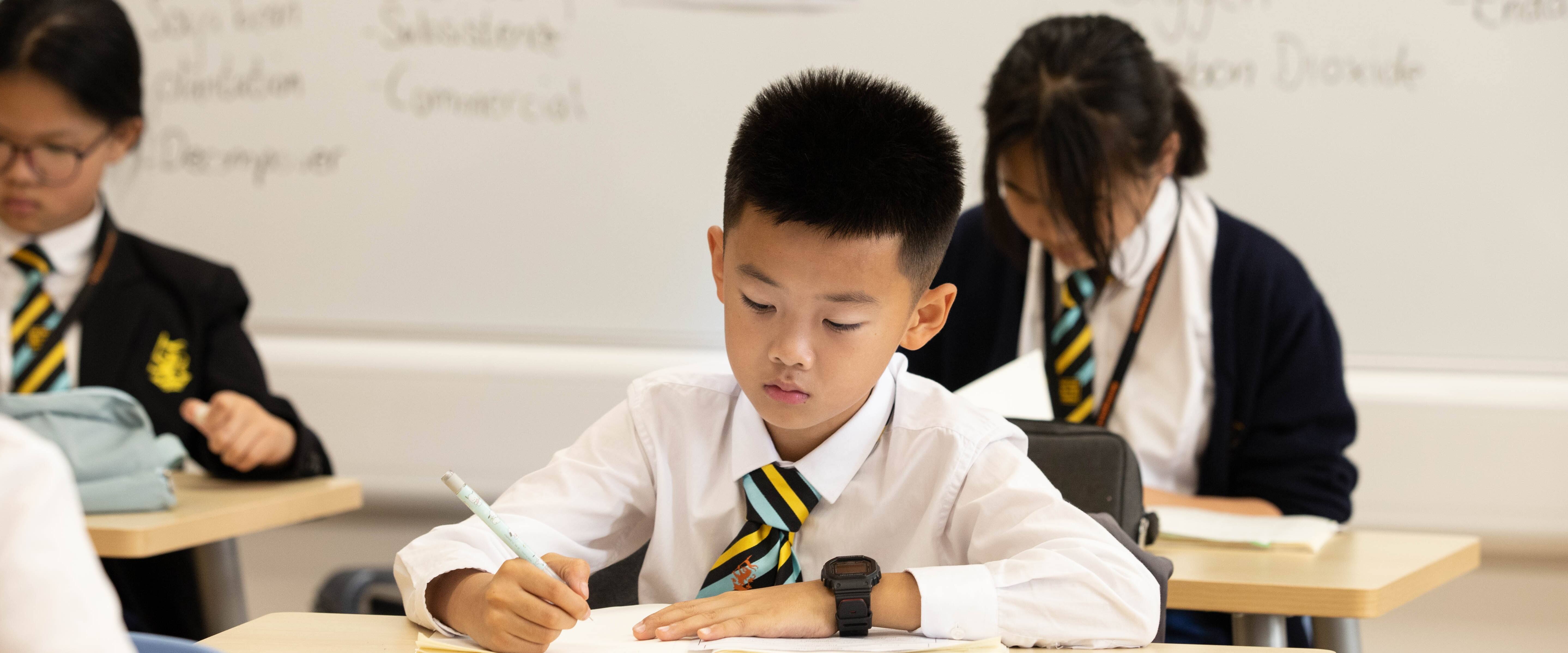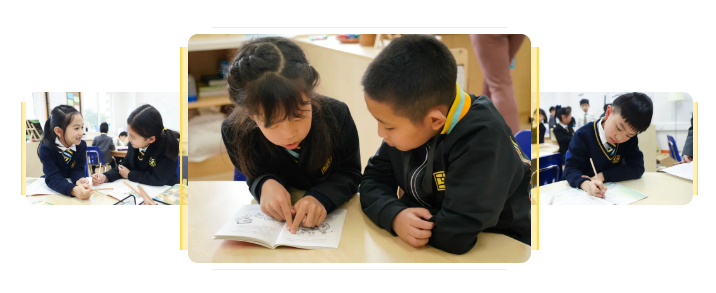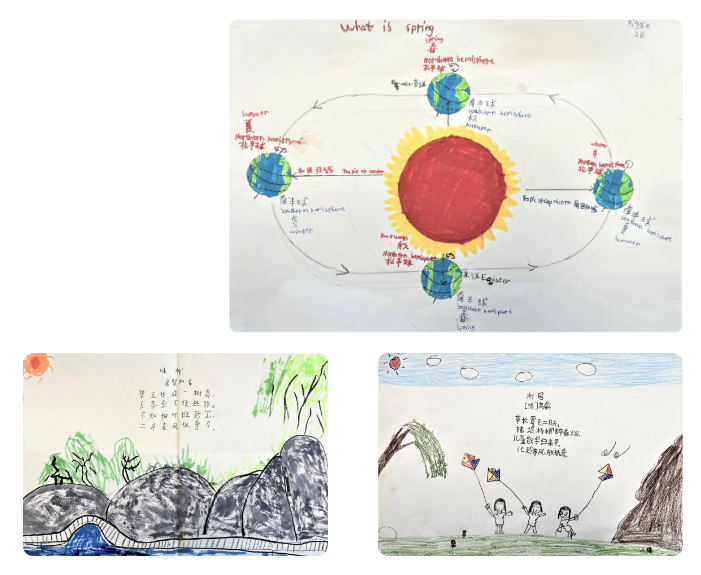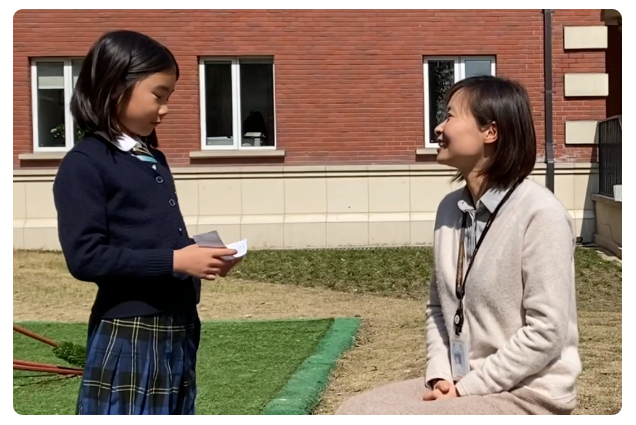
Amy Hu
G2 Project-based learning lead

1
Hiba pupils learn Chinese through
inquiry-based learning at the
Primary School
What is inquiry?
To inquire is to raise questions and investigate them to reveal truths or find solutions. Inquiry-based learning is a pupil-centred model of teaching and learning in which pupils speak up about their confusion and ask questions to build on their current knowledge and expand understanding. At the same time, the teacher takes on more of a facilitator role, helping pupils clarify their thinking, seek solutions for problems and provide academic support.

What is language acquisition?
Language acquisition contains three intertwined areas, i.e., learning the language, learning about the language, and learning through the language. In learning Chinese, for example, these areas unfold as learning a Chinese character, learning how to write a poem, and reading a text to obtain information.
2
Learning Chinese through the
inquiry-based model at Hiba primary
We use inquiry as an integral part of our Chinese learning and teaching at Hiba Lower Primary. For instance, Grade 2E pupils learned about the "Spring" article through an inquiry approach.
One day, our pupils came to the class excited to see snow drifting on a spring day. They asked a series of intriguing questions, such as why it snows on a spring day, what spring is, why flowers bloom in spring, what solar terms there are in spring and why spring does not span over a year.

Artworks from Grade 2 pupils
Then the inquiry started. Pupils interviewed their schoolmates, teachers and heads of schools to ask their opinions on spring. They spent a weekend looking for the footsteps of spring in nature and returned to the school, where they discovered wonderful spring scenes depicted in the article Looking for Spring and in the poems of Zhejiang poets Gao Ding and He Zhizhang. They worked with their teachers to explore the earth's rotation and seasonal alterations and learned how spring in the northern hemisphere comes and goes slowly as the earth moves. Meanwhile, they learned about the origin of the 24 Chinese solar terms and their significance in both ancient and modern days and were awed by the wisdom of our ancestors. Then, they shared what they had learned with the Grade 1 and 2 pupils, through which they also practised their oracy skills.

Interview with Ms Wei Sun
As stated in the 2022 edition of the new curriculum, the Chinese curriculum aims to not only raise pupils' ability to apply the language with accumulated experience and an understanding of the language characteristics and its application through practices in authentic contexts but also to support their all-round development by cultivating their thinking skills and quality, core literacy, creativity, practical skills, teamwork and communication skills. The inquiry-based language learning at Hiba Primary School is a wonderful practice that provides our pupils with a broad learning space, allowing them to think and use what they have learned.